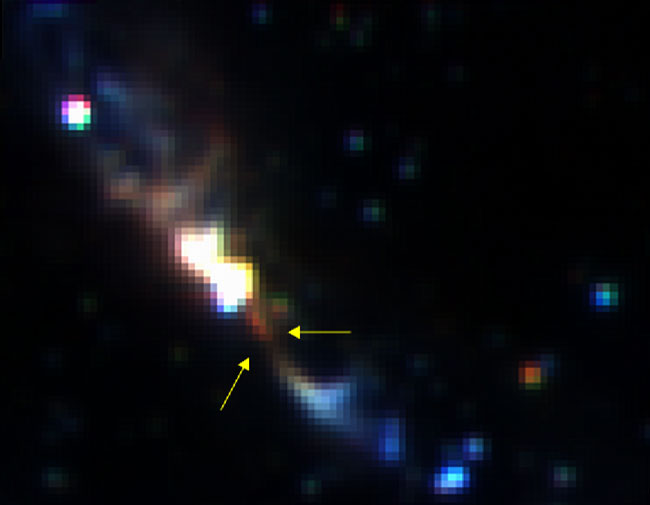
Invisible magnetic field lines twisted like long ropes of DNA help stars spiral into life, according to a new model.
New stars form from enormous clouds of gas and dust collapse under their own gravity into dense spheres. The packed cores are ignited by thermonuclear reactions. As they collapse, the clouds rotate, and like an ice skater pulling in his arms while spinning, rotation speed increases as the collapsing cloud gets smaller.
Some of this rotation energy, called angular momentum, must be dissipated before the star can contract completely. How this happens, though, is unknown.
"Given the size difference between an ordinary star like our sun and a typical molecular cloud, if the rotation was allowed to increase as the cloud collapsed, the [apparent] centrifugal forces would never allow the material to collapse into anything small enough to form a star," said study team member Antonio Chrysostomou at the University of Hertfordshire in the United Kingdom. "Hence, there needs to be a mechanism present which removes this angular momentum."
A new model by Chrysostomou and colleagues suggests excess material and energy are borne away from the protostar along helical magnetic field lines that surround the star. This stellar exodus carries away enough angular momentum to allow the spinning cloud to undergo the final phase of collapse necessary to become a star.
Their findings are detailed in the Nov. 1 issue of the journal Nature.
Our Milky Way is filled with magnetic fields, which are generated any time charged particles move about. The new model predicts that field lines around a cloudy stellar womb get twisted by the womb's rotation.
Get the Space.com Newsletter
Breaking space news, the latest updates on rocket launches, skywatching events and more!
"The presence of ionized particles in the cloud will effectively drag the field around with it, thereby twisting it up," Chrysostomou told SPACE.com.
The team's new model is based on observations at the Anglo-Australian Observatory of the infrared light emitted by particles surrounding HH 135-136, a protostar cloaked in a molecular cloud located roughly 9,000 light-years away. They specifically examined which direction the particles faced.
"Interstellar grains become aligned to the magnetic field," Chrysostomou said. "They essentially behave as a Polaroid to radiation which passes through them. By measuring the degree of polarization we can deduce something about the magnetic field structure."
The team's new model predicts helical magnetic field lines around HH 135-136 extend some 50,000 AU from the protostar. One AU is equal to the distance between the Earth and the sun. Material is thought to be ejected from the system at more than 200,000 mph (100 kilometers per second).
Chrysostomou predicts that eventually the magnetic field lines will straighten out to become like the general galactic magnetic field. However, as observations of our sun show, magnetic field lines situated close to the star will remain a little curved.
- Top 10 Star Mysteries
- Top 10 Strangest Things in Space
- Video: Star Song: Eavesdropping on the Sun
Join our Space Forums to keep talking space on the latest missions, night sky and more! And if you have a news tip, correction or comment, let us know at: community@space.com.
Ker Than is a science writer and children's book author who joined Space.com as a Staff Writer from 2005 to 2007. Ker covered astronomy and human spaceflight while at Space.com, including space shuttle launches, and has authored three science books for kids about earthquakes, stars and black holes. Ker's work has also appeared in National Geographic, Nature News, New Scientist and Sky & Telescope, among others. He earned a bachelor's degree in biology from UC Irvine and a master's degree in science journalism from New York University. Ker is currently the Director of Science Communications at Stanford University.









